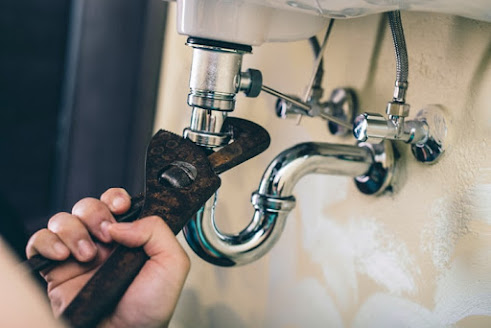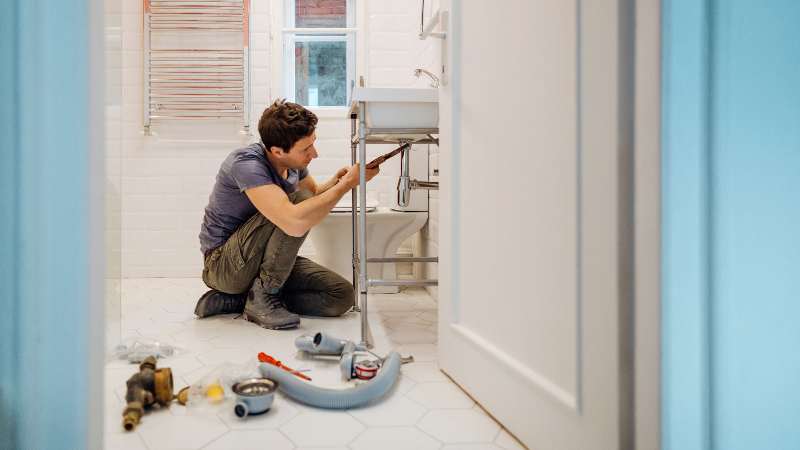Fast Solutions For Plumbing Noises in Your Residence
Fast Solutions For Plumbing Noises in Your Residence
Blog Article
Have you been searching for guidance on Why Your Water Pipes Are Noisy and How To Shut Them Up?

To detect loud plumbing, it is important to figure out initial whether the undesirable sounds occur on the system's inlet side-in other words, when water is turned on-or on the drain side. Noises on the inlet side have varied causes: excessive water stress, used shutoff as well as tap parts, incorrectly connected pumps or other appliances, improperly placed pipe bolts, as well as plumbing runs including a lot of tight bends or various other limitations. Noises on the drainpipe side normally stem from poor area or, just like some inlet side noise, a design containing tight bends.
Hissing
Hissing sound that occurs when a tap is opened slightly normally signals too much water pressure. Consult your neighborhood water company if you think this trouble; it will be able to inform you the water pressure in your location and can install a pressurereducing shutoff on the inbound water supply pipe if essential.
Various Other Inlet Side Noises
Squeaking, squealing, scratching, breaking, and tapping typically are brought on by the expansion or tightening of pipelines, generally copper ones providing hot water. The audios occur as the pipes slide versus loosened bolts or strike neighboring residence framework. You can commonly identify the area of the problem if the pipelines are revealed; simply comply with the noise when the pipelines are making noise. Probably you will certainly uncover a loose pipe wall mount or an area where pipes lie so near to floor joists or other mounting items that they clatter versus them. Attaching foam pipeline insulation around the pipelines at the point of contact must treat the trouble. Make certain bands as well as hangers are protected as well as give ample support. Where feasible, pipeline bolts need to be affixed to substantial architectural aspects such as foundation wall surfaces rather than to framing; doing so decreases the transmission of resonances from plumbing to surface areas that can magnify and transfer them. If connecting bolts to framework is unavoidable, cover pipelines with insulation or other resistant material where they get in touch with fasteners, and also sandwich the ends of brand-new fasteners between rubber washers when mounting them.
Remedying plumbing runs that deal with flow-restricting tight or many bends is a last resource that should be embarked on only after consulting an experienced plumbing contractor. Regrettably, this circumstance is rather common in older houses that may not have been constructed with indoor plumbing or that have actually seen numerous remodels, especially by amateurs.
Chattering or Shrieking
Extreme chattering or screeching that happens when a shutoff or tap is turned on, and that normally goes away when the installation is opened completely, signals loosened or defective internal components. The option is to replace the shutoff or tap with a new one.
Pumps and devices such as washing makers and dishwashers can transfer electric motor sound to pipes if they are improperly attached. Link such things to plumbing with plastic or rubber hoses-never rigid pipe-to isolate them.
Drainpipe Noise
On the drain side of plumbing, the principal goals are to eliminate surface areas that can be struck by falling or rushing water as well as to protect pipes to consist of inevitable audios.
In new construction, tubs, shower stalls, toilets, and wallmounted sinks and basins ought to be set on or versus resilient underlayments to minimize the transmission of noise with them. Water-saving commodes and faucets are much less loud than standard versions; install them instead of older types even if codes in your area still allow using older components.
Drainpipes that do not run vertically to the cellar or that branch right into straight pipe runs sustained at flooring joists or other mounting present particularly problematic noise troubles. Such pipes are large sufficient to radiate substantial resonance; they likewise bring substantial quantities of water, that makes the situation worse. In brand-new building, specify cast-iron soil pipes (the huge pipes that drain bathrooms) if you can manage them. Their massiveness includes much of the sound made by water passing through them. Also, avoid transmitting drains in walls shared with rooms as well as spaces where people gather. Wall surfaces having drains ought to be soundproofed as was explained earlier, utilizing dual panels of sound-insulating fiber board and also wallboard. Pipes themselves can be wrapped with special fiberglass insulation made for the purpose; such pipelines have an impervious plastic skin (sometimes having lead). Results are not constantly acceptable.
Thudding
Thudding noise, usually accompanied by shivering pipelines, when a faucet or device valve is switched off is a problem called water hammer. The noise as well as resonance are brought on by the reverberating wave of stress in the water, which unexpectedly has no place to go. Often opening up a valve that releases water promptly into an area of piping including a limitation, joint, or tee installation can create the exact same problem.
Water hammer can normally be treated by setting up fittings called air chambers or shock absorbers in the plumbing to which the issue shutoffs or faucets are attached. These devices enable the shock wave created by the halted flow of water to dissipate airborne they have, which (unlike water) is compressible.
Older plumbing systems might have brief upright sections of capped pipe behind wall surfaces on faucet runs for the very same purpose; these can ultimately loaded with water, reducing or ruining their performance. The treatment is to drain pipes the water supply totally by shutting off the main water system shutoff and also opening up all faucets. After that open the main supply valve and also shut the faucets one at a time, beginning with the tap nearest the valve and finishing with the one farthest away.
3 Most Common Reasons for Noisy Water Pipes
Water hammer
When water is running and is then suddenly turned off, the rushing liquid has no place to go and slams against the shut-off valve. The loud, thudding sound that follows is known as a water hammer. Besides being alarming, water hammer can potentially damage joints and connections in the water pipe itself. There are two primary methods of addressing this issue.
Check your air chamber. An air chamber is essentially a vertical pipe located near your faucet, often in the wall cavity that holds the plumbing connected to your sink or tub. The chamber is filled with air that compresses and absorbs the shock of the fast moving water when it suddenly stops. Unfortunately, over time air chambers tend to fill with water and lose their effectiveness. To replenish the air chambers in your house you can do the following. Turn off the water supply to your house at the main supply (or street level). Open your faucets to drain all of the water from your plumbing system. Turn the water back on. The incoming water will flush the air out of the pipes but not out of the vertical air chamber, where the air supply has been restored. Copper pipes
Copper pipes tend to expand as hot water passes through and transfers some of its heat to them. (Copper is both malleable and ductile.) In tight quarters, copper hot-water lines can expand and then noisily rub against your home's hidden structural features — studs, joists, support brackets, etc. — as it contracts.
One possible solution to this problem is to slightly lower the temperature setting on your hot water heater. In all but the most extreme cases, expanding and contracting copper pipes will not spring a leak. Unless you’re remodeling, there's no reason to remove sheetrock and insert foam padding around your copper pipes.
Water pressure that’s too high
If your water pressure is too high, it can also cause noisy water pipes. Worse, high water pressure can damage water-supplied appliances, such as your washing machine and dishwasher.
Most modern homes are equipped with a pressure regulator that's mounted where the water supply enters the house. If your home lacks a regulator, consider having one professionally installed. Finally, remember that most plumbers recommend that water is delivered throughout your home at no lower than 40 and no greater than 80 psi (pounds per square inch).
Whatever the state of your plumbing, one thing is certain — you’re eventually going to encounter repair and replacement issues around your home that require professional help. That’s where American Home Shield can come to your aid.
https://www.ahs.com/home-matters/repair-maintenance/causes-of-noisy-water-pipes/

Do you like reading up on Why is My Home Making Strange Plumbing Noises? Give a review directly below. We will be pleased to know your ideas about this blog posting. In hopes that you visit us again in the near future. Liked our piece? Please share it. Help another person check it out. Thank you for taking the time to read it.
Visit Report this page